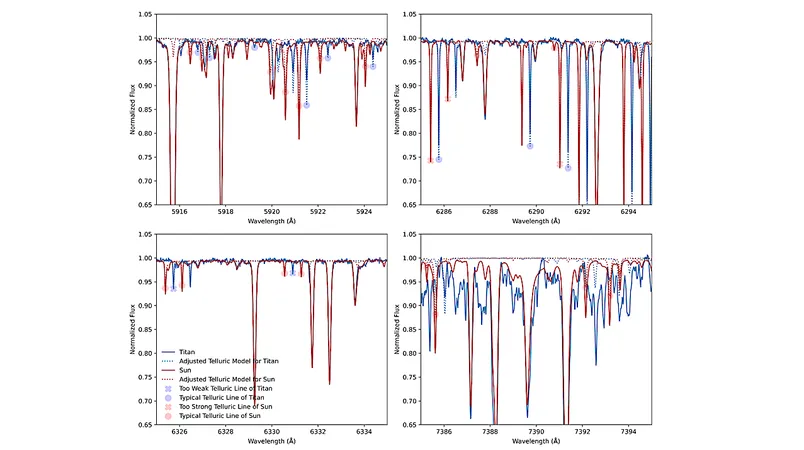
Urgent Need for Clarity in Anal Cancer Screening for HIV Patients
2025-09-09
Author: Arjun
Navigating New Guidelines in Anal Cancer Screening
Recent developments in anal cancer screening guidelines for individuals living with HIV represent a significant milestone in prevention efforts. However, lingering uncertainties surround the effectiveness and cost-efficiency of these screening measures, as highlighted in a clinical review published in *Clinical Infectious Diseases*.
According to the review's authors, led by Dr. Hayden S. Andrews from the University of Texas Southwestern Medical Center, the field of anal cancer prevention is at a pivotal juncture, with promising early data and newly defined clinical guidelines. They emphasize the importance of ongoing research to assess the efficacy of these guidelines and to bolster the necessary infrastructure for implementing high-resolution anoscopy (HRA) uniformly and equitably.
The 2024 Screening Guidelines: A Dual Approach
Two main sets of clinical guidelines were introduced in 2024: the International Anal Neoplasia Society's (IANS) Consensus Guidelines and the U.S. Department of Health and Human Services (DHHS) Opportunistic Infections HPV Panel. These guidelines were shaped by findings from the Anal Cancer-HSIL Outcomes Research (ANCHOR) study, which demonstrated that treating precancerous anal lesions significantly reduced the risk of developing anal cancer in HIV-positive individuals.
The IANS guidelines specifically cater to various risk groups, including men who have sex with men and transgender women living with HIV, while the DHHS guidelines apply strictly to the HIV-positive population alone.
Recommended Screening Protocols and Statistics
Both guidelines advocate for routine screenings, such as anal Pap tests and digital anorectal exams, to commence at age 35 for men who have sex with men and transgender women, and at age 45 for all other men and women. Shockingly, about 10,000 new anal cancer cases are diagnosed each year in the U.S., ranking anal cancer as the 27th most prevalent cancer. The incidence rate for HIV-positive individuals can balloon up to 100 times higher than that of the general population.
A staggering 90% of anal cancer cases are attributed to high-risk HPV, progressing from anal dysplasia, which can be categorized into low-grade (LSIL) and high-grade (HSIL) squamous intraepithelial lesions. HSIL is commonly linked to high-risk HPV.
Limitations and Access Issues with High-Resolution Anoscopy
Prior to the ANCOR study's revelations, previous guidelines primarily recommended screenings for individuals exhibiting certain risk factors, such as engaging in anal sex, presenting with genital warts, or having cervical dysplasia, and often required access to HRA.
HRA is preferred over traditional anoscopy due to its greater accuracy; however, access remains constrained in many regions due to the high costs of equipment and the procedural intricacies involved. During HRA, clinicians perform a more thorough examination, while simple anoscopy relies on a visual assessment alone.
Recommendations in the Face of Accessibility Challenges
In the absence of HRA, the guidelines suggest that patients should not undergo screening anal Pap tests but should instead report any anorectal symptoms and undergo a digital anorectal examination, followed by a referral to a specialist for simple anoscopy if necessary.
Despite the lack of current treatments to eradicate anal HPV infections, vaccination remains strongly encouraged as a vital preventive measure.



 Brasil (PT)
Brasil (PT)
 Canada (EN)
Canada (EN)
 Chile (ES)
Chile (ES)
 Česko (CS)
Česko (CS)
 대한민국 (KO)
대한민국 (KO)
 España (ES)
España (ES)
 France (FR)
France (FR)
 Hong Kong (EN)
Hong Kong (EN)
 Italia (IT)
Italia (IT)
 日本 (JA)
日本 (JA)
 Magyarország (HU)
Magyarország (HU)
 Norge (NO)
Norge (NO)
 Polska (PL)
Polska (PL)
 Schweiz (DE)
Schweiz (DE)
 Singapore (EN)
Singapore (EN)
 Sverige (SV)
Sverige (SV)
 Suomi (FI)
Suomi (FI)
 Türkiye (TR)
Türkiye (TR)
 الإمارات العربية المتحدة (AR)
الإمارات العربية المتحدة (AR)